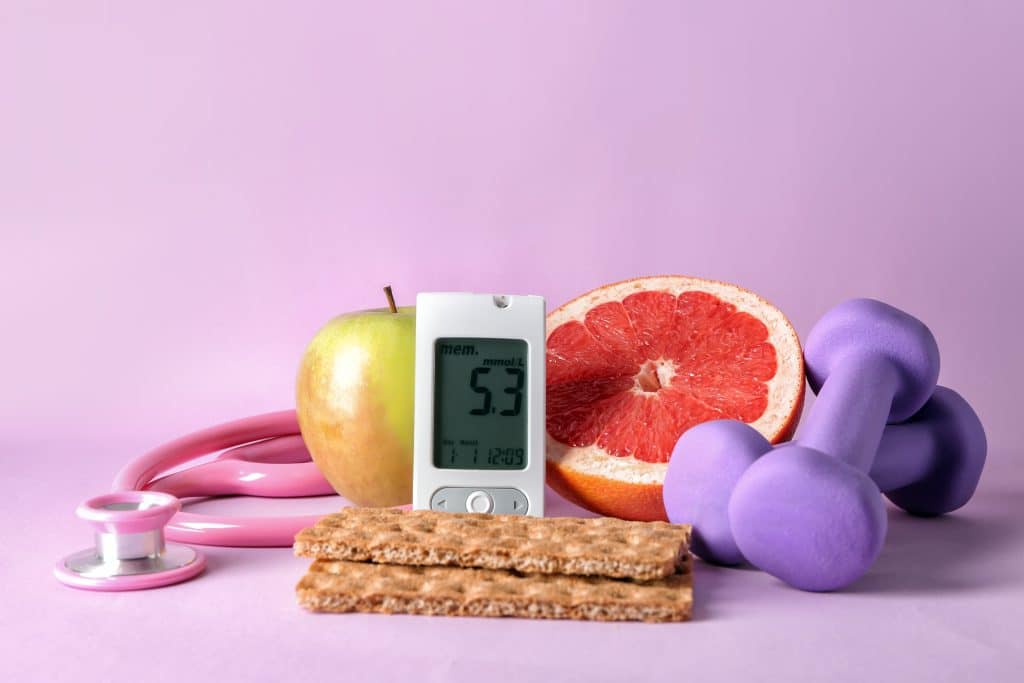Maintaining blood sugar balance is a must to prevent chronic diseases and promote overall health through multiple food and lifestyle choices.
Maintaining blood sugar balance is not just a dietary trend or medical recommendation. It’s a must for optimal health and longevity.
Imagine your body as a finely tuned machine, where glucose acts as the fuel. When this fuel is delivered in a steady, controlled manner, every system operates smoothly, from the brain’s cognitive functions to your muscle energy reserves.
However, the fluctuations in blood sugar can trigger adverse health effects. They include insulin resistance, inflammation, and oxidative stress. The issues not only sap your energy and mood but also lead to chronic diseases like diabetes and cardiovascular disorders.
Therefore, you must understand and optimize your blood sugar for improved mental clarity, emotional stability, and long-term health.
Let’s dive in and discuss the blood sugar balance in detail!
Why is Balanced Blood Sugar Important?
Metabolic health experts suggest that your blood sugar should be 70-120 mg/dL for most of the day. The ideal fasting glucose should be 72-85 mg/dL, while post-meal blood glucose rise should not exceed 30 mg/dL.
- Keeping your blood sugar in this range prevents excessive insulin release, reducing the risk of insulin resistance. Insulin resistance and glycemic variability also can cause prediabetes and Type 2 diabetes.
- A high level of insulin inhibits fat burning and increases inflammation, oxidative stress, and glycation. Glycation can damage your body’s proteins, DNA, and lipids.
- You may also face short-term risks like weight gain, anxiety, fatigue, depression, and impaired cognitive performance.
- The long-term issues include damage to blood vessels, cardiovascular disease, cancer, diabetes, or kidney disease.
Therefore, maintaining your glycemic index and blood glucose control is important for lifelong health. Your metabolic health is in your control, and you can make dietary and lifestyle choices to keep your health stable for a long time.
How to Balance Your Blood Glucose Levels?
Maintaining blood glucose levels involves food choices, physical activity, and other lifestyle habits. Here are some effective strategies:
1. Dietary Choices
When we eat, the carbohydrates are broken down into glucose. Glucose is absorbed into the bloodstream and raises blood sugar. The rise in blood sugar depends on carbohydrate content, processing, and the presence of other nutrients.
Foods with minimal fiber, fat, and protein cause rapid and steep blood sugar spikes. Then, your pancreas releases insulin to lower blood sugar levels when they rise. In insulin-sensitive individuals, blood sugar levels normalize within about two hours of eating.
If you aim for stable glucose:
Avoid foods with added sugars, refined grains, and refined fruits.
- Check nutrition labels for “Added sugars.” Even seemingly healthy foods like protein bars may contain high amounts.
- Added sugars can be found in less obvious foods like ketchup, salad dressings, and pasta sauces.
- Fructose in added sugar may increase hunger and insulin resistance.
- Naturally occurring sugars in whole foods have less effect on glucose levels due to fiber and nutrients.
- Unrefined foods cause fewer glucose spikes compared to processed foods. A study found stepwise insulin elevation with increased grain processing.
Monitor your glucose to check individual responses to specific foods. Foods less likely to cause spikes include beans, mushrooms, leafy greens, tofu, berries, eggs, garlic, fish, oils, lean meat, and seeds.
Also, eat vegetables and fruits with polyphenols to improve glucose regulation. Eating at regular intervals helps avoid large blood sugar fluctuations.
2. Physical Activity
Your active muscles use glucose for energy, and the glucose transporter protein molecules move glucose into cells without additional insulin. Regular exercise increases these transporters in muscle cells, improving glucose uptake and lowering blood sugar spikes.
- Exercise can initially raise blood glucose due to liver glycogen release. But then it improves fasting glucose and insulin sensitivity over time.
- Various forms of exercise (mild aerobic, resistance training, or high-intensity interval training) improve metabolic fitness and glucose control.
- Short bursts of exercise multiple times a day are more effective than one long session in reducing post-meal glucose spikes.
- A study indicated that regular short walks throughout the day are more effective. They reduce post-meal glucose peaks compared to a single 30-minute walk session.
Exercise in any form improves glucose control and metabolic health. Avoid long periods of sitting by taking short walks or standing breaks. Aim for at least 150 minutes of moderate-intensity weekly exercise for improved health.
3. Sufficient Sleep
Lack of sleep, especially slow-wave sleep, reduces insulin sensitivity and glucose tolerance. Sleep deprivation also increases sympathetic nervous system activity and cortisol production, leading to elevated blood sugar levels. Even short-term sleep restriction can impair glycemic control and metabolic health.
In a small study involving 11 healthy young men, restricting sleep to 4 hours per night for five days resulted in significant metabolic changes. These individuals showed higher glucose responses after consuming the same breakfast. Also, they experienced a 40% reduction in the rate at which glucose cleared from their blood during a glucose tolerance test.
Therefore, consistent sleep of 7-9 hours per night is crucial for proper metabolic function. You can also consider a melatonin supplement to regulate sleep-wake cycles. It improves sleep quality and maintains optimal metabolic health.
4. Stress Management
Psychological stress triggers the release of cortisol and epinephrine, raising blood glucose levels through glycogenolysis and gluconeogenesis. Chronic stress can lead to chronic hyperglycemia and insulin resistance. Stress-related eating of high-carb, high-sugar foods further increases blood glucose levels.
- Stress management techniques like diaphragmatic breathing and meditation reduce fasting and post-meal glucose levels.
- Meditation can decrease fasting blood sugar, post-meal glucose, and HbA1c levels over time.
- Self-care practices help remove the negative impact of stress on glucose regulation.
You can also take a 5-HTP supplement (a precursor to serotonin) to regulate mood and reduce stress levels. It indirectly supports better glucose control.
5. Other Lifestyle Habits
- Stay Hydrated: Drink plenty of water to maintain blood volume and glucose levels.
- Time-Restricted Eating: Restrict eating to an 8-hour window, from 8 a.m. to 2 p.m. This reduces fasting glucose levels and insulin sensitivity compared to eating over a longer period.
- Black Seed Oil: Add black seed oil to your diet as it improves the uptake of glucose in skeletal muscle and adipose tissue. It improves glycemic control by optimizing glucose utilization.
- High-Fiber Diet: To improve glucose control, consume 50 grams of fiber daily, primarily from vegetables, fruits, legumes, and whole grains.
Summing Up
Maintaining your blood sugar levels is essential for your overall well-being. It can reduce the risk of chronic conditions like Type 2 diabetes and cardiovascular disease while supporting optimal metabolic function and energy levels.
Dietary choices, physical activity, and lifestyle changes can help you achieve stable blood glucose. Prioritize the factors we mentioned to improve your quality of life and longevity!
Disclaimer: The information provided here is for educational purposes to maintain your blood glucose balance. It is not intended to replace professional medical advice, diagnosis, or treatment. Always consult a qualified healthcare provider if you have pre-existing medical conditions or are taking medications.
Supporting Research
Flores-Opazo, Marcelo; McGee, Sean L.; Hargreaves, Mark. Exercise and GLUT4. Exercise and Sport Sciences Reviews 48(3):p 110-118, July 2020. | DOI: 10.1249/JES.0000000000000224
Khanum, A., Khan, S., Kausar, S., Mukhtar, F., & Kausar, S. (2019). Effects of diaphragmatic breathing exercises on blood sugar levels in working class females with type-2 diabetes mellitus. Int. J. Med. Sci. Public Health, 8, 34-42.






